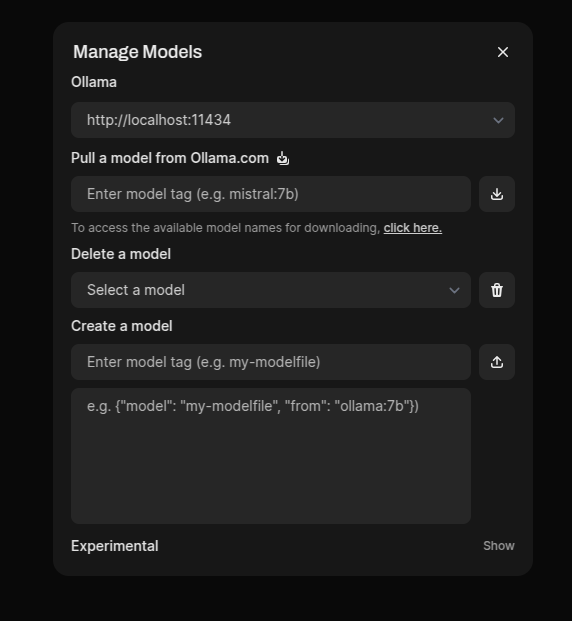..JavaBendeR...
Copy, paste, run, bye ...
Sunday, August 10, 2025
Saturday, January 25, 2025
Ollama - open-webui - deepseek - CPU - local run
Conversations on it :
Let's build a mini-ChatGPT that's powered by DeepSeek-R1 (100% local):
Why do we need to run it locally when we can always run it from deepseek site?
Privacy mainly, You can run it from the site if you want but this is for companies or tech departments that want to run it locally and not worry about what data / info could be leaked
Okay, but why build your own front end when open webUI exists? I can build an identical local solution with 2 commands (ollama pull, docker run).
A company may want to incorporate it into their own site for specific purpose to incorporate their branding and feel
Various reasons, but yes if I was just messing with it I would just do what you mentioned
Monday, March 18, 2024
MicroService ASYNC Communication via Message Brokers [Spring, RabbitMQ, Microservice]
RabbitMQ DynamicQueue Names + replyTO semantic
@RabbitListener(queues = "#{dynamicQueueNameResolver.resolveResponseQueueName()}")
public void handleResponse(@Payload UserBalanceResponse response, org.springframework.amqp.core.Message message) {
System.out.println("UserController Got a rabbit message = " + response);
String correlationId = message.getMessageProperties().getCorrelationId();
correlationIdResponseMap.put(correlationId, response);
CountDownLatch latch = correlationIdLatchMap.get(correlationId);
if (latch != null) {
latch.countDown();
}
}
@PostMapping("/get-user-balance")
public ResponseEntity<String> getUserBalance(@RequestBody UserRequest userRequest) throws InterruptedException {
// Generate a correlation ID for the request
String correlationId = UUID.randomUUID().toString();
// Setup latch to wait for the response
CountDownLatch latch = new CountDownLatch(1);
correlationIdLatchMap.put(correlationId, latch);
// Send request to the BalanceService with the correlation ID
rabbitTemplate.convertAndSend("user_balance_request_queue", userRequest, message -> {
message.getMessageProperties().setCorrelationId(correlationId);
// Set replyTo to a dynamic queue based on correlation ID
message.getMessageProperties().setReplyTo(dynamicQueueNameResolver.resolveResponseQueueName());
return message;
});
System.out.println("UserController has SENT a rabbit message = " + userRequest);
// Wait for response with a timeout
latch.await(5, TimeUnit.SECONDS);
correlationIdLatchMap.remove(correlationId);
UserBalanceResponse userBalance = correlationIdResponseMap.remove(correlationId);
if (userBalance != null) {
return ResponseEntity.ok("User balance for user ID " + userRequest.getUserId() + " is: " + userBalance);
} else {
return ResponseEntity.status(HttpStatus.INTERNAL_SERVER_ERROR).body("Failed to get user balance for user ID: " + userRequest.getUserId());
}
}
BALANCE SERVICE
@RabbitListener(queues = "user_balance_request_queue")
public void processBalanceRequest(UserRequest userRequest, Message requestMessage) {
System.out.println("GOT userRequest = " + userRequest);
// Simulate processing the balance request
// In a real scenario, this could involve querying a database or external service
String userBalance = "Balance for user " + userRequest.getUserId() + ": $123"; // Example balance
// Construct the response object
UserBalanceResponse response = new UserBalanceResponse(userRequest.getUserId(), userBalance);
// Send the response back to the UserController using the replyTo queue specified in the request message
rabbitTemplate.convertAndSend(requestMessage.getMessageProperties().getReplyTo(), response, message -> {
message.getMessageProperties().
setCorrelationId(
requestMessage.getMessageProperties().getCorrelationId()
);
return message;
});
}
Friday, February 2, 2024
Got tired with Rust Borrow Checker ! Try WebAssembly instead :)
Saturday, April 23, 2022
Caching with Spring
@Cachable: Runs before actual method invocation
@CachePut: Runs after the actual method invocation
Unless: works for return value
Condition: works for method parameter
@Cacheable(value = "saveCache", key = "{#a, #b, #c}", unless="#result.result.size() > 0")
@CachePut(value="defaultCache", key="#pk",unless="#result==null")
@Cacheable(value="actors", key="#key", condition="#key == 'sean'")










